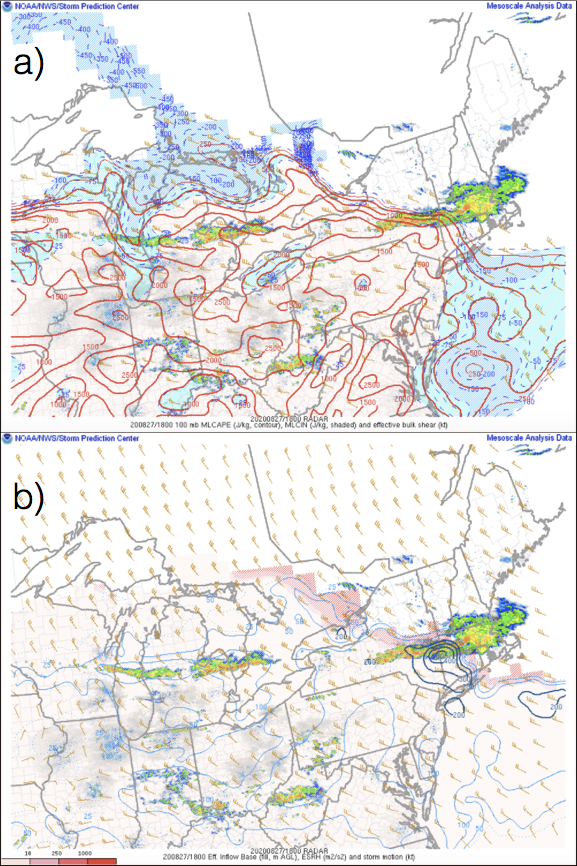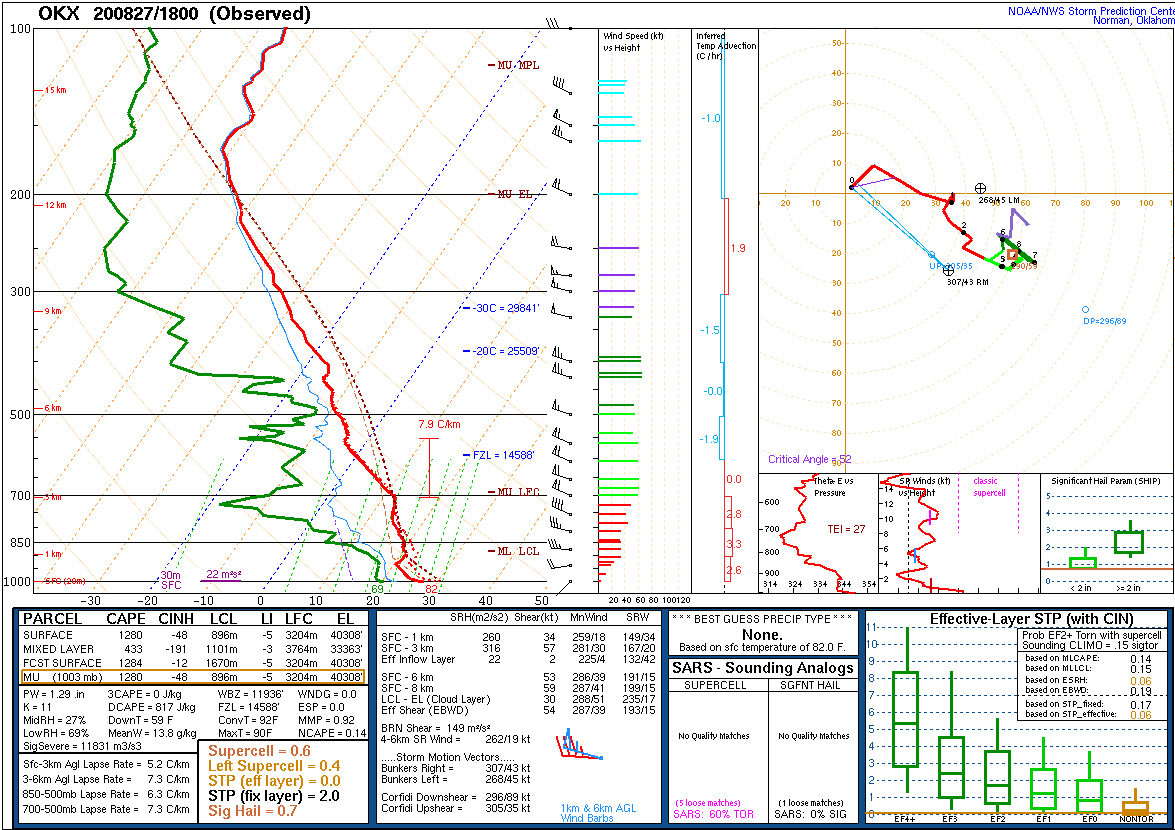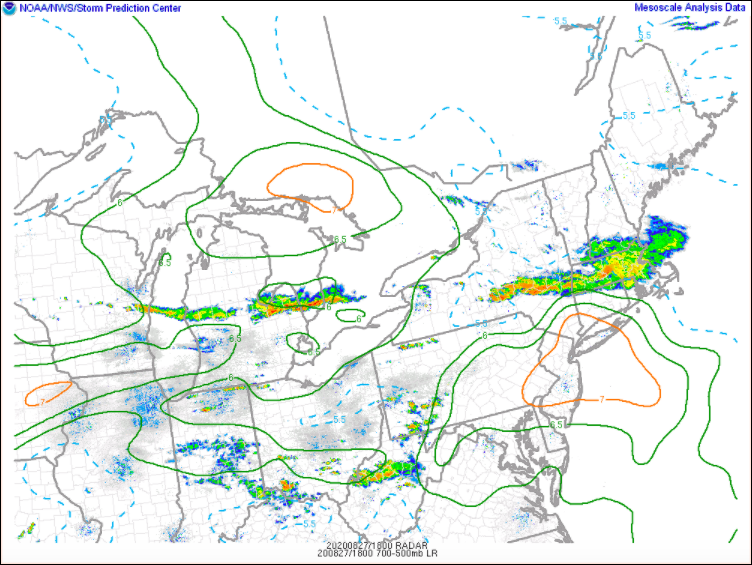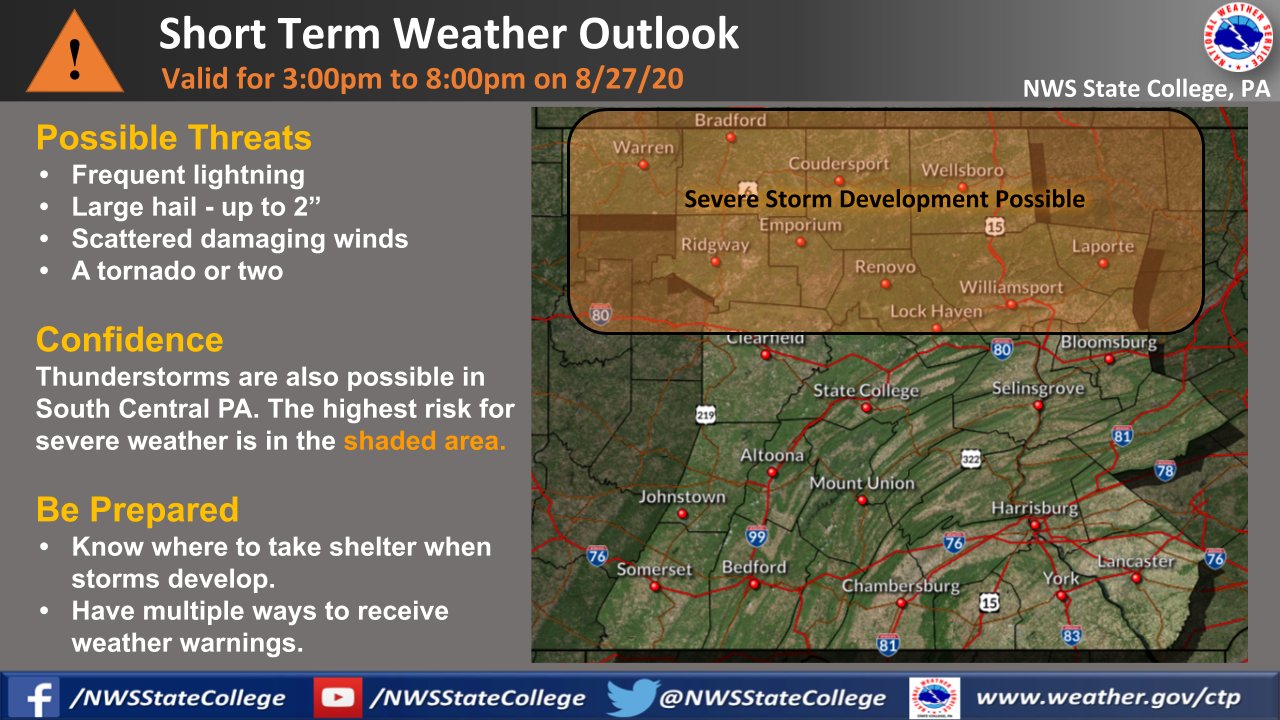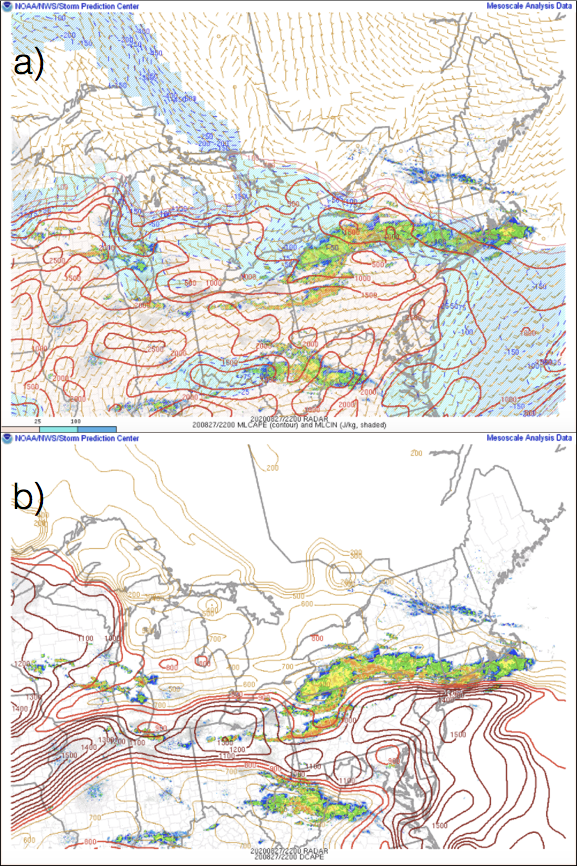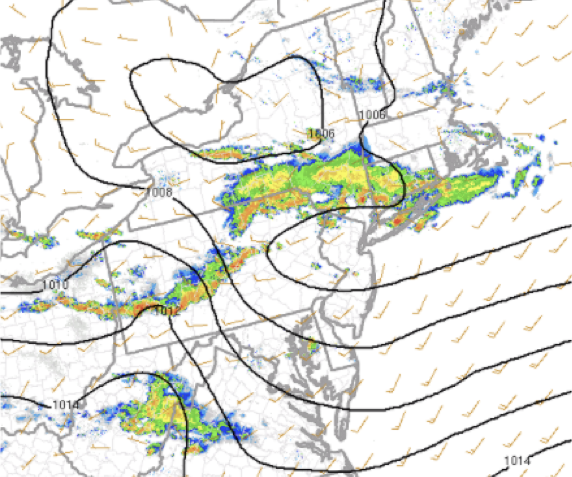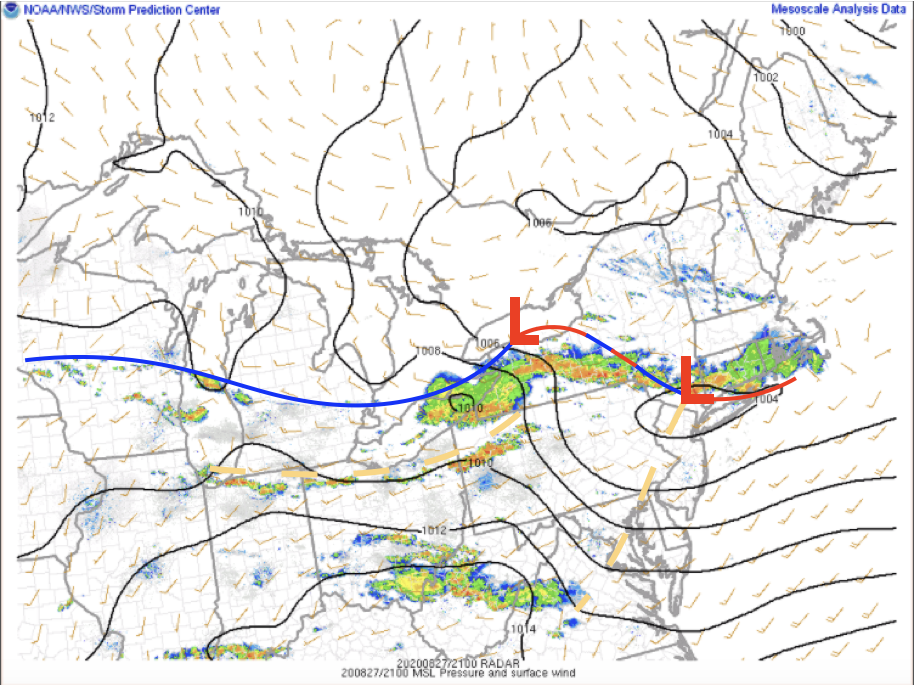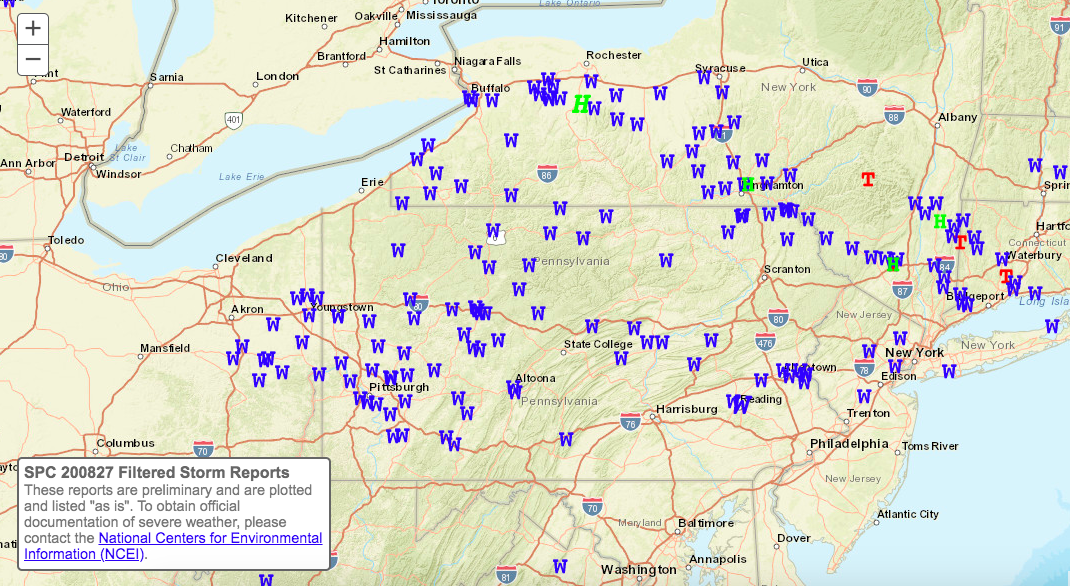.
On August 27th, 2020, a potent closed low in the Canadian Maritimes with 500mb heights ranging 2 to 4 standard deviations below normal (Figure 1), and a ~1020mb high pressure over the Southeast U.S., resulted in a tight pressure gradient across the Northeastern states. Unseasonably cool temperatures (50s/60s) were ushered into northern New England as a result of northerly flow in Ontario/western Quebec around a nearby area of high pressure. Meanwhile further south in the Mid-Atlantic region, the air mass was much warmer and more moist compared to the air mass to the north. This set up a well-defined warm front with a sharp temperature gradient straddled along the I-90 corridor in New York (Figure 2); an attendant weak surface low was located near Lake Ontario. A series of shortwaves were expected to propagate along the pressure and thermal gradients on the 27th and serve as a lifting mechanism and the impetus for severe weather later in the day.
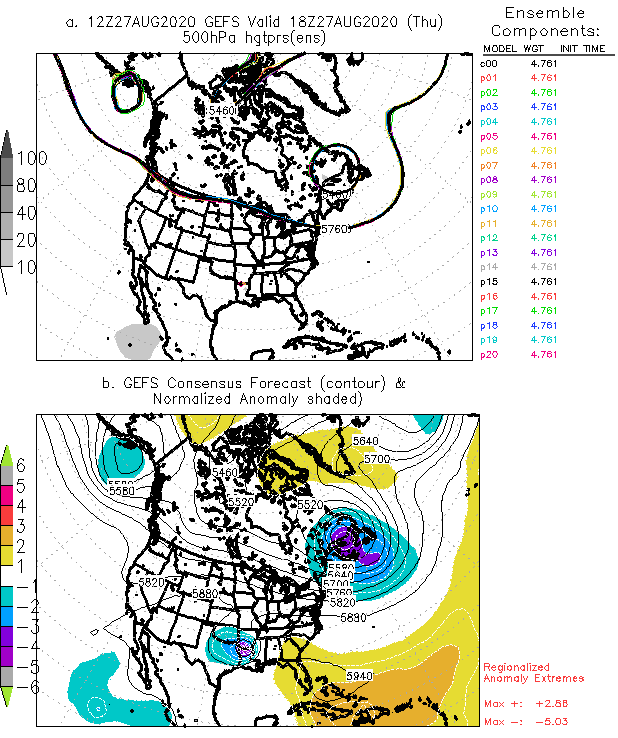
Figure 1: 6 hour forecast GEFS 500mb heights (top) and anomalies (bottom) valid at 18Z 8/27/20.
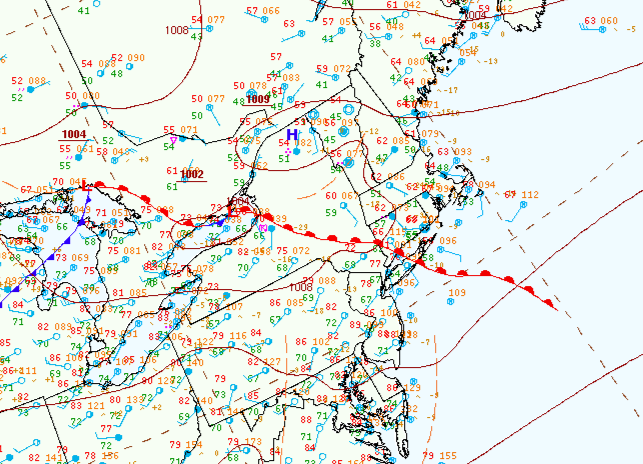
Figure 2: WPC high-resolution surface analysis valid at 15Z 8/27/20.
The Storm Prediction Center outlined the area along and just south of the warm front in New York and Connecticut, extending down into northern Pennsylvania, and New Jersey, in an Enhanced Risk (Figure 3). Locations just to the south, including most of the remaining portions of Pennsylvania, were located in a Slight Risk. The tight pressure gradient between the exiting closed low to the north and high pressure to the south resulted in a belt of very fast zonal/westerly flow across the I-90 corridor. This was characterized by 700mb winds of 55-65 kts and 850mb winds of 30-45 kts. The strong wind fields created ample shear, sufficient for storms to become supercellular, and an environment very supportive of strong damaging winds (reflected by SPC’s damaging wind probabilities). NWS Albany sent out an update on social media by 5am on August 27th highlighting that areas south of the warm front would be the most likely to experience severe thunderstorms later that afternoon (Figure 4).
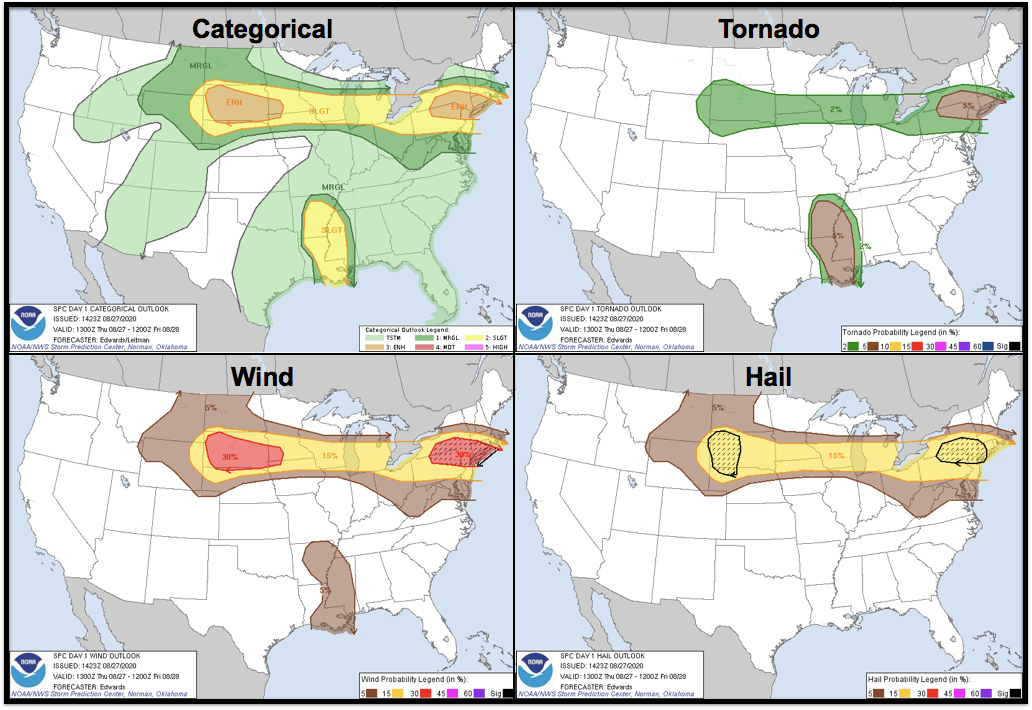
Figure 3: SPC 1300Z Day 1 Convective Outlook: Categorical Outlook (top left), Tornado Outlook (top right), Wind Outlook (bottom left), Hail Outlook (bottom right).
By late-morning, the focus was on one of the shortwaves which exited Ontario and provided forcing for ascent for rain and embedded thunderstorms as it traveled into western New York. NWS Albany issued an Area Forecast Discussion (AFD) at 14:54Z which highlighted the expected convective evolution and the related potential hazards with this area of activity:
“Strong to potentially severe convection will be developing on the southern edge of the initial activity late this morning for the lunchtime to early afternoon hours. ... These storms may initially form within the elevated instability but will become more surface-based parcels, as they move south and southeastward from the roughly the I-90 corridor.
These storms will likely take on supercell characteristics for the afternoon hours as they move toward the eastern Catskills, Mid Hudson Valley, Taconics and into the Berkshires and NW [Connecticut]. Eventually, these cells will form a QLCS/squall line, as they drop south of the area for this evening.
The main threat with the initial supercells will be both damaging winds and large hail /possibly up to 2” in diameter/. … Near/just south of the boundary, long curved hodographs favored the development of a tornado or two as well.”
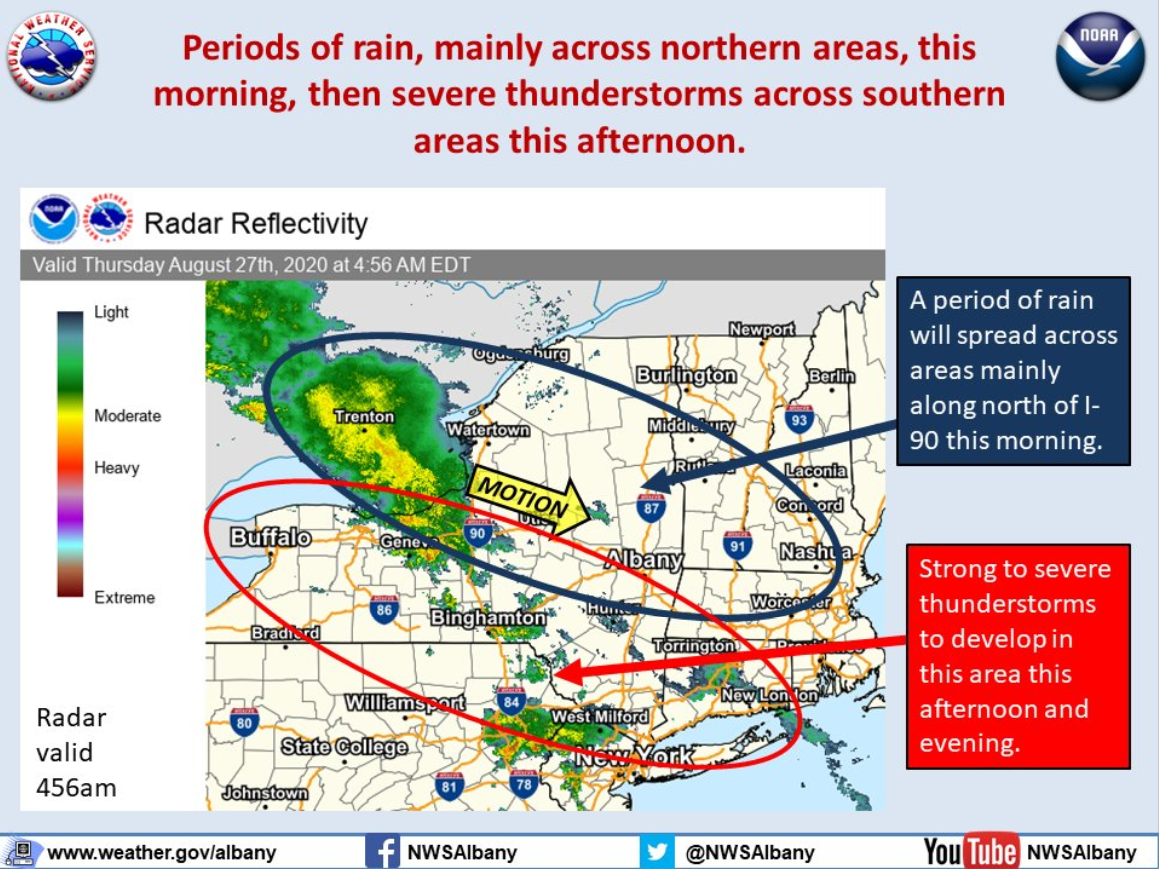
Figure 4: IDSS graphic published by NWS Albany on the morning of 8/27/20.
Figure 5: New York mesonet observations with radar data underlay valid from 12Z-20Z 8/27/20.
